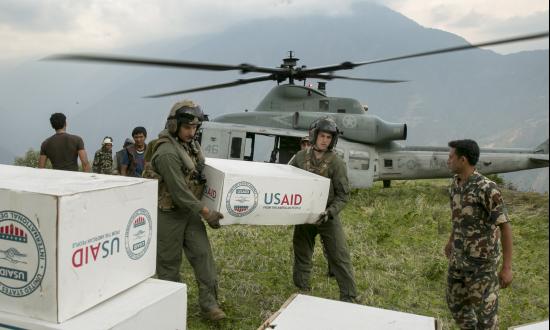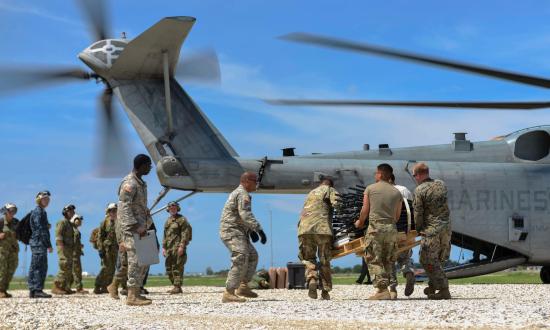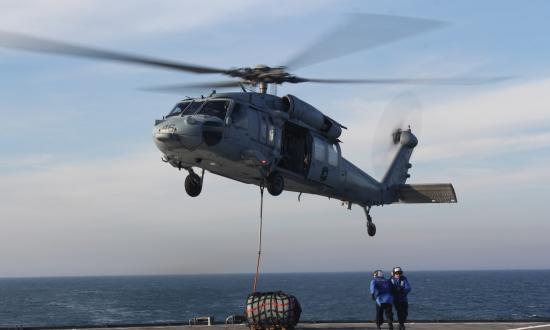When 180 souls set out into the Bay of Bengal from an overcrowded refugee camp in Bangladesh in December 2022, their hopes were for a new start and a better life in Indonesia. However, the vessel went missing shortly after departure. Now, the first report about the fate of the boat has been released. The report, resulting from an investigation by the Associated Press (AP) and released on 7 June, confirms the worst (and always the most likely) suspicion: The vessel sank with all lives lost a mere week into its journey. The sinking and loss of all onboard has been confirmed by a recording of a satellite phone call from the vessel as it went down, as well as the eyewitness testimony of another migrant boat’s captain. Both the vessel’s fate and the fact that it was AP—not any regional government—that pursued answers in the case are testaments to the urgent need for change in the Bay of Bengal and the adjacent Andaman Sea—a change that must be led by regional governments without delay.
An Ongoing Crisis
The regional crisis there, in which the December sinking was yet another sad chapter, is substantially driven by the outflow of the persecuted Rohingya minority from Myanmar (referred to as Burma by the United States government). Roughly one million Muslim Rohingya lived in the majority-Buddhist country’s northwest coastal state of Rakhine, but had been denied full rights and citizenship essentially since national independence in the mid-20th century. The situation took its most drastic turn in 2017, when the Myanmar military began a brutal crackdown in response to attacks on government facilities by a Rohingya-linked group. An already-occurring exodus of Rohingya accelerated, with hundreds of thousands fleeing the country. The United States and several other countries introduced sanctions, and in early 2022, the Biden administration announced its determination that the Myanmar military’s actions against the Rohingya constituted genocide and crimes against humanity.
Seven hundred thousand Rohingya people have left their homes since 2017, with most crossing the land border into Bangladesh and arriving to an area known as Cox’s Bazar. There, they have joined the 300,000 Rohingya who fled in previous years, filling what is now the largest refugee camp on the planet. As one might imagine, conditions in the camp can be challenging, with food distribution, primary childhood education, medical care, and even basic physical security failing to reach adequate levels. As a result, many of the camp occupants have chosen to become refugees once again, accepting offers from readily available smugglers to undertake a boat journey to other regional states—most often Malaysia—where it is hoped there are prospects for a better life.
This maritime outflow of persons creates a wholly different crisis. Official UN estimates are that 3,500 Rohingya attempted to flee by sea in 2022, heading across the Bay of Bengal and Andaman Sea, a 350 percent increase over 2021. Of those, 348 individuals went missing while at sea, including the 180 that lost their lives in the December storm.
In recent years, smugglers’ tactics in the region have included consolidating several boatloads of migrants onto one craft and simply abandoning it (the consolidation allows the smugglers to both return home themselves and preserve the maximum number of vessels for future trips). This horrifying prospect occasionally has been exacerbated by the actions of coastal states, which have a times refused to send search vessels when boats are reported as not having arrived at intended destinations, turned away inbound vessels, and even towed boats away from intended arrival ports and farther out to sea.
An At-Sea Response
As with all migrant situations, the enduring solution to this crisis involves stability in the source country. In the case of the Rohingya, this would mean a long-term fix implemented by a recalcitrant Myanmar government. As this seems unlikely, the next-best action would be to create stability in the camps at Cox’s Bazar. While the UN works with Bangladesh to accomplish that, though, there needs to be an at-sea response to staunch the flow of migrants and prevent further loss of life.
Such responses are expected of coastal states, with the UN Convention on the Law of the Sea (UNCLOS) and the 1979 International Convention on Maritime Search and Rescue clearly outlining states’ obligations to aid those in peril off their coasts, including accepting individuals in distress and seeking long-term immigration, repatriation, or refugee determinations only after lifesaving care and shelter are given. Not all regional states have signed the 1979 treaty, but all are signatories to UNCLOS, which requires every coastal state to “promote the establishment, operation and maintenance of an adequate and effective search and rescue service regarding safety on and over the sea.”
Along with regional stakeholders’ compliance with these agreements, Bay of Bengal states should pursue bilateral and multilateral arrangements that trigger expedited immigration or repatriation processes and standards of medical care, thereby facilitating greater international coordination during cases. Perhaps more urgently, an operational- and tactical-level response should be developed for effective maritime force deployment and coordination. Joint and multinational patrols that maximize air and surface asset coverage on and around known transit routes, as well as established procedures for national and subnational command center cooperation for unfolding cases, need to be implemented to ensure the most robust maritime domain awareness and responses possible.
The February 2023 Ministerial Conference of the Bali Process on People Smuggling, Trafficking in Persons, and Related Transnational Crime was an opportunity for the most-affected states (Bangladesh, Myanmar, Thailand, Malaysia, Sri Lanka, Indonesia, and India) to establish these procedures, as well as to assess and ask for whatever support they deemed might be needed from external stakeholders. Alas, while the “Adelaide Strategy” produced by the conference did include “Irregular Migration and Related Transnational Crime” as a priority area of cooperation, the activities listed under it were decidedly lacking in urgency. (They include to “conduct research [and] policy development” and “tabletop and planning exercises” and to continue “anticorruption initiatives.”) The closest the strategy came to a commitment to active responses at sea was to state that the group would “engage on emergency irregular migration situations through the Consultation Mechanism and . . . Good Offices outreach,” and (in strikingly vague language) “conduct practical cooperation.”
Moving Forward
The United States is a Bali Process member, and, while regional leadership is key, it is time for the Americans to advocate for more robust action. Such advocacy can and should be accompanied by offers of technical assistance and subject matter expertise—for instance, the network of relationships and processes the U.S. Coast Guard maintains in the Western Hemisphere can be replicated in the Bengal/Andaman area, with templates for cooperative case handling between different countries’ command centers adjusted for regional needs. Even the Coast Guard’s bilateral counternarcotics agreements can be altered for the migrant/search and rescue missions of the region to enable vessels to cross into or patrol in partners’ territorial seas in an appropriate and coordinated manner for case responses, or to allow the deployment of shipriders and technical advisors on partner nation vessels to assist with jurisdictional issues or provide needed expertise. With dry season and its accompanying migration spike coming in October, now is the time for regional states—with the urging and assistance of the United States if necessary—to act to prevent further loss of life.






